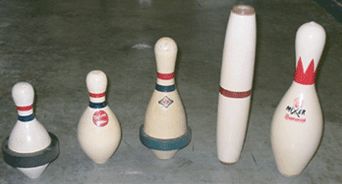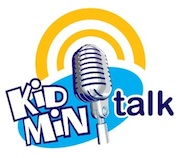• Plate-Spinning Management

Plate-Spinning Management
The fine art of “plate spinning” is a sort of a juggling act where you keep as many plates (real or plastic) spinning as you can on top of sticks or poles. If a plate stops spinning, it will fall and break, so you have to visit each plate as it slows, to speed it up again. The more plates you have, the more frantically you must dash from plate to plate to plate to keep them all spinning. Figuratively, you are frantically busy keeping track of lots of things. This is like another similar phrase from juggling…“Having a lot of balls in the air.”
How many plates can you spin at one time?
The trick is to keep the old-one spinning, while you add more. But, at what point do you let one plate stop, in order to add another new spinning plate? The truth is, practically, you can only keep so many plates spinning at one time, successfully. So why do we keep adding more spinning plates, while holding on to the ones that have stopped? It becomes cumbersome to add more sticks and plates and still keep up with the older spinning activity.
This management exercise is tricky business (pun intended). It gradually becomes a great diversion of effort, rendering you “incompetent” or maybe frustrated with all that you have begun for the sake of just adding still one more program activity.
The remedy is simply to select a few things to concentrate on that you really can manage, thus, avoiding the imbalance of tireless effort and a “circus-like” program to manage all the spinning plates. We may be assuming that only we are qualified to spin the plates we started spinning. Another solution is to delegate! That is, have others join you in spinning plates, either to help you spin your plates or you encourage them to have their own set of spinning plates. Your children’s ministry does not have to look like a three-ring circus! But having to do everything your self is a solvable-management problem— if you are willing share the sticks and plates.
Here are four solutions that might help:
1. Hand off some of the routine tasks, so you can concentrate of the more strategic tasks that require your unique role.
2. Try to enlist volunteers to assist you in specific repetitive tasks a couple of hours a week. If you get enough of them this might prove that you need part time paid help in your ministry.
3. Be clear about what you want helper to do. Provide some training and let them take some responsibility for some of the ministry.
4. Create a small group, that you can call your Admin Team. Get them all together and share the vision of how they can help make it happen for the children’s ministry.
• Morning Pages
Morning Pages
The concept of Morning Pages is founded on a few observations from a writer who discovered her secret for creative writing. Julia Cameron describes this process of writing in her book called, The Artist Way. She had been writing for several years before she stumbled onto her creative writing process. She noticed her best writing occurred in the morning. Her editing worked best in the afternoons, and she would read in the evenings.
What emerged was the discipline of writing three pages every morning. These were hand-written pages, about nothing in particular, at first. She just started with what was happening to her and began to ramble on with no agenda, rhyme or reason—just a conscious stream of uninterrupted thought.
This was a lot like one might write a letter, fully expressing oneself with little or no thought about editing, grammar or spelling. She discovered as she began collecting pages of written work that within those pages were articles, short stories and anecdotes and narratives about her daily life experience. She would write three pages and stop.
Later she would go back and began the task of editing, sorting and bunching thoughts together that became another draft or copy, suitable for the beginnings of good written work. At first, the writing discipline was merely the daily exercise to experience creativity. It was tapping into that flow of conscious thought by moving the pen script in the moment, no matter what it turned out to be. She was really trying to ignore any negative thought that would judge or deny the creative process from finding expression. Basically, this is the difference between the left and right brain in writing. The exercise forces the right hemisphere to stay focused, while ignoring interruptions from the left hemisphere, which is the more judgmental and critical side.
After a few years, I have discovered that some of my best writing is also in done in the morning. I have found a subject or theme, idea, thought or something of interest to write about. My goal is to write one page the same way, just a stream of consciousness written without regard to how it comes out. I call this my “first draft.” Later, I come back to edit, wordsmith, to format, to check spelling and to consolidate my thoughts.
Here is the Challenge: Try to set aside some time every morning to write some morning pages. Perhaps you just write one page at first, or more on mornings that you have more time.
The discipline is just staying with it day after day. Often I write from an observation from my daily experience or I draw from conversations with my students. Then I formulate a written dialogue with them in my mind. Writing one page really works for me. My first draft is just that…my first draft. I use the principles of Fast Write. I leave it and come back and develop the draft, still keeping it to one page. The more you do this, the easier it becomes to write. For me, writer’s block is really gone now. No judgments are allowed for the first draft. It is always terrible. The second and third drafts are for improvements.
It just works!
• How to Approach a Horse
How to Approach A Horse
We took 50 kids to a Horse Ranch for a weekend camping experience. The attraction and novelty was the horses, but there were many other farm animals there. Each kid had an animal to care for, for the entire week.
Of course, these city kids, who would hardly lift a finger to do chores at home, fell right in-line with enthusiasm and excitement about caring for animals, but especially the horses.
These were the teachable moments, for sure. So the Camp Wrangler went to great pains to demonstrate some of the proper technique, including how feed, groom, bridle and even how to “muck” the stalls, which they loved!
However, one especially insightful teaching included how to approach a horse. You stand a good safe distance away, with a carrot in your hand. Put the carrot in your outstretched hand, and wait. Notice that the horse will look at the carrot, then look at you and then back to the carrot. Then you can take one-step towards the horse without moving your outstretched hand. Watch the horses eyes, it will repeat looking at the carrot, then you, then back to the carrot. Take another step. You continue this tentative advancement, until you are standing next to the horse. Offer the carrot, which he will eat out of your hand.
You have successfully approached the horse. You do not rush up the horse, the horse will be startled and move back. Further, do not raise the carrot above your head in a threatening manner. You will likely get the same startled response.
This is same approach you would use in approaching a human baby. At some safe distance back, extend both arms out with hands open. Even the most timid child will look at your hands, then your eyes and then back to your hands. At that point take another step forward, stop, repeat with extended hands and watch for the eyes to repeat looking at your hands, then your eyes, then your hands. Repeat this until the child comes into your arms.
I have experimented with this holding my arms out with hands extended and in a welcoming posture and the child will eventually come to me, assuming they are old enough to move towards you. Move slowly! Allow time for the eye contact process to be completed. It gives you implied permission to move or advance. Children just like horses get all their safety cues with their eyes.
Rushing up to children and horses does not work for a welcoming posture. Swooping in on children is a way for children to feel unsafe with us. Once this is done, the child remembers. Establish eye contact and wait for the signals. If the signals are not forthcoming, you must wait longer. If your eyes are covered or bloodshot or if you have been crying, do avoid this procedure. It will not work.
I have learned a few lessons from experimenting with this idea. I am slow to greet my grand kids, until either they rush to greet me, or I slowly move towards them allowing them some time to adjust to my presence. I think the secret is to slow down, establish eye contact and advance slowly towards hugs and greetings. Do not force yourself on children, or none of this will work.
• Move the Rock!
Move the Rock
There is an amazing phenomenon that only occurs in Death Valley. On Racetrack Playa, one can find sliding rocks on the riverbed. There seems to be no apparent explanation how these heavy rocks move along the dry parched ground. These rocks leave a rutted trail like they were pushed or pulled along the surface (as in the above photo).
The Playa Racetrack Riverbed is really isolated, the playa (dry lake bed) about 3 miles long and 2 miles wide. At least 10,000 years ago this region underwent climatic changes resulting in cycles of hot, cold and wet periods. As the climate changed, the lake evaporated and left behind beige colored mud, at least 1,000 feet thick. It is an extremely hot spot in Death Valley. Few tourists actually go there. Those who do, try to explain this apparent mystery. However, it is reported that no one has ever seen these rocks move, but it appears obvious that the rocks do move, because of the trails left behind. So there are many theories (or guesses) as to how this happens.
One of the explanations, that seem to make more sense to me, is rain or winter water run off accumulates at the south end of the riverbed. The desert winds can blow the water into the empty portions of the riverbed, making a slippery muddy surface that allow the rocks to move when hard 50+ mph winds blow through the valley. Another theory involves that same water that freezes under the rocks and the strong winds propel the rocks along the surface on ice. However, the rocks can go in every direction (East, West, South and North), even changing directions. Also there are all sizes of moving rocks, from under a pound to over a hundred pounds. Since we have no recorded sightings of the rocks actually moving, all this remains a mystery to explain.
One thing is clear the rocks move, unseen, and the evidence of their moving is very visible. This obscure movement is quite behind the scenes and the rocks are found “stopped in their tracks” in the daylight drought.
I like to use this phenomenon to explain the leadership practice of working behind the scenes to “move the rock.” When a good leader takes a “studied approach” to their Children’s Ministry, things are prepared and thought through behind the curtain of public attention, but when finally unveiled, at just the right moment, people might just be surprised at the results. Many may never know what it really takes to make things work, but the private preparation can be showcased dramatically, leaving a huge impression!
You can actually “Move the Rock” in your Ministry by your “diligent private” preparation. So Moving the Rock might mean…
- The more complex your project or program becomes the more it demands organization and advanced preparation. This really is a function of good paper work, goals, charts, checklists, “to do” lists, and planning.
- Being willing to remove yourself to allow for time to really pray and prepare.
- Thinking out of the box, looking at alternatives, solving problems, taking some counsel, working with a coach.
- No one is privy to your private process, until they see your ministry unfold. They might applaud your effort. Then you can take the bow, and give the Lord some credit.
- We all know that relationships, recruiting, training, organizing and scheduling is the real Admin work of the Kidmin. Just do it!
- You might just “Dazzle Yourself” sometime with your public success, but you really know the hard work is your preparation.
- Understand the principle: “Your private preparation will get public demonstration.”
Moving the Rock might mean that God adds His unique blessing that exceeds your best efforts. But I have noticed that His miracles are added on top of your obscure, but intentional, behind the scenes process.
Challenge: Leave your followers wondering just how you “Moved the Rock!” Wait until they notice. Then, it’s our secret!
• Show Me Your Work!
Learning math was always a chore for me in school. It never really came easy for me. However, when the teacher required me to “show my work,” this added another dimension to my math skills. If somehow, I skipped a step in the process, but got the right answer by guessing, I was marked down for my process being flawed. The resolve was to get both the answer and process right.
As I have grown older, I have become more concerned about “process” in leadership rather than having the right answer. Showing Your Work allows your coach to participate and help you to work through issues and get more ownership for your change.
The Coach’s mandate to Show Your Work really allows someone else into your process. Here are fifteen areas where Showing Your Work matters.
1. Goal Worksheets
I believe writing up Goal Worksheets can alter your ministry process! Yes, the arduous painstaking task of writing your plans can help. Having to show your work improves your planning process. The goal outcome is important, for sure, but your process is just as important. The right outcome often follows a good process. Many a leader will have a good goal and maybe some passion, but no plan to accomplish it. The goal-setting process on a worksheet can create your forward movement, because it implies taking the next step. Show your work.
2. “To-Do” Lists
Here is another objective way to track or monitor you daily routine that can help you be focused and productive. The most successful way to manage your day is to prepare your “to-do” list the night before, or at the beginning of your day. However, having a good list is one thing, but keeping it open in front of you is quite another. Show me Your Work!
3. Management Notebook
Your Notebook is a place to monitor and manage your daily routines and projects. Sure, it can be done digitally, but only after you master the discipline of writing your ministry process. Showing Your Work allows you to invite another to assist you in improving your admin. skills and gifts. This becomes your quick reference to all your project management.
4. Setting Agendas
The Art of Prethinking any meeting will make you more productive. Some agendas are public—for a group meeting. What about your one-on-one meeting? Yes, any prearranged meeting is an opportunity for thinking ahead—planning on paper. Show Your Work to your Coach.
5. Vision Statements
The process of writing out your three visions (Church, Kidmin, and Yours) is a definitive process. In order to write it, you have to define it. Only God gives vision, but we have to catch it in order to represent it to our followers. Defining your vision for each of your programs will help shape your ministry. It helps to Show Your Work.
6. Program Evaluation
It is recommended that you write a fresh evaluation of all annual programs in your program menu as soon as possible when it is current. Filing it away for review at next years repeat program is the best way to improve upon your past program performance. Having a place to Show Your Work might keep you from reinventing the wheel and repeating your past mistakes.
7. Resume Revisions
Working on keeping your Resume up to date is an annual discipline. The agenda is collecting new data to update your file drawer. This keeps your resume current–a function of Showing Your Work, just in case you need it.
8. Job Description Rewrite
As your position emerges with the years, it is critically essential that you keep up with updating what you are really doing in the ministry. Few in church leader-ship really understand your Kidmin position as much as you. Continue to upgrade what you are doing and get it approved. Your annual review should be based upon what you are doing in your job description. Show your Work!
9. Qualification Brief
Collecting statements, compliments, and accomplishments from your ministry in writing keeps you from forgetting. The QB document will help get you some serious attention in applying for your next Kidmin position. It compliments your current resume. Show your Work!
10. Written Assignments
Coaches often make requests and challenges that will require you to Show Your Work. This is a clear invitation that you are involving your coach in your process. It allows for his review, input and encouragement. This is more than a homework assignment. It is your process that moves your ministry forward and helps you step it up.
11. New Program Design
This is particularly useful for building your infrastructure and supplementing your program menu. Showing Your Work allows you demonstrate all the steps needed and required to establish responsible, but thoughtful process.
12. Creating A Think Sheet
Putting some of your thoughts on paper will help you prepare for any meeting. Learning this process and Showing Your Work will help you avoid lots of problems.
13. Brainstorming a Message
Collecting verbs is the process of exploring your message options in writing. These words show up in your early message drafts. Showing Your Work allows the coach to participate in your research process.
14. Morning Pages
It does not really matter what you call your daily efforts to capture your thoughts, i.e., journaling or think sheets. This daily writing discipline can move your influence into transferable concepts for others beyond your walls. Refining your thought on paper will result from Showing Your Work.
15. Written Proposals
This has to doe with your taking some initiative to make structural changes and create new programs where you need to make your case and get approval from the staff and church leadership. Showing Me Your Work can potentially improve your proposal. It has worked for others.
All of these efforts to Show Your Work will help you to have a “studied” approach to your ministry and will allow your Coach to assist in your ministry process. These are some of the ways that you can take your ministry to another level.
• What is Duckpin Bowling?
Duckpin Bowling is an old form of ten pin bowling only with a smaller ball and smaller (squattier) pins. It is really popular more in the Eastern US, especially around Baltimore north and south. On my last two trips to Baltimore, MD I was able to play this fun version of traditional bowling. You could say this is more the original form of bowling.
The ball is about the size of a softball, I am holding one in my hand. It can weigh 2-4 pounds. It does not have any finger holes. Another feature of the game that is different than our more traditional bowling, you get three tries per frame to knock all the pins down, not two. The scoring is similar, but with extra throw you get another chance at getting all ten pins down. If you knock all the balls down, that is a Strike. If you knock all the pins down with second ball, that is a Spare. How ever many you knock down by the third throw, that becomes your score.
You can see by this photo the varieties there are in bowling pins. Duckpins are the second two from the left. The tall narrow pin is called a Candle Pin is the second from the right. The standard bowling pin, for many of us, is on the far right. You will notice the two other pins with a rubber collar around the pin, these are Rubber Pin Bowling Pins. I have never played this type, but apparently, you get more bounce, or pin action, when the pins hit each other.
For the younger players they have these guard rails that close off the gutters, so there are no gutter balls. So the thrown ball stays in the lane, no matter how the ball is thrown. My youngest grand kids aged three and six, could not really throw the ball correctly, but because of the slight slope in the floor, a dropped ball at the line, the ball would roll very slowly all the way down the lane, bouncing off the gutter rails and at the other end would knock down pins, every time. It was so funny to watch these two just run up to the start line, drop the ball and watch it roll all the way down bouncing from rail to rail to the pins and knock them down. My son and I just barely beat these two with this kind of throwing, which compared to ours, should not have happened, we surmised. It kept them in the game and made a lot of family fun.
For a family outing this was a winner. We just played for about an hour, free pizza came with the deal. The pizza was not that great, but a good time was had by all. I actually scored a win, but not by much. Only a few pins separated me from the youngest two! It was close!
FYI, Babe Ruth loved to play Duckpin Bowling!
• Baseball Explained
Let me Explain how the game of baseball is played.
You have two sides, one out in the field and one in.
Each man that’s on the side that’s in goes out and when he’s out, he comes in and the next man goes in, until he’s out.
When three men are out, the side that’s out comes in and the side that’s been in goes out and tries to get those coming in out.
Sometimes you get men still in and not out.
When both sides have been in and out nine times, including the not outs, that’s the end of the game.
• Next Generation Partnership
Partners for the Next Generation
Recently, our church sponsored a Photo Contest. However, the photo submitted had to answer the question: What do I love about my Church?
After a lengthy process, I concluded, “I love my church because it has been willing to partner with me to influence the next generation of the children.” That was it.
That really narrowed down the picture options. Our mission program—global impact—focuses our global emphasis on a few regions of the world, developing long-term relationships.
So I have partnered with our church’s short- term missions program doing children’s ministry. Together we are investing in the next generation of leadership that will make a difference. My church helped support many of my overseas Kid-Mission Trips. Now after twelve years those children have grown up. We have stayed involved with their leaders and churches only to discover that the partnership is working.
I have partnered with my church, other missions and missionaries that have included:
- Organized and Conducted Evangelistic campaigns for children.
- Conducting Vacation Bible Schools and rallies for kids.
- Mission Conference—children’s program for missionary kids.
- School Assemblies in public, private and mission schools.
- Children’s outreach programs while Medical Teams help adults.
- Distribution of two Containers of Rice—Meals of Love for India.
- Building Playgrounds (three of them)
- Distribution of a Container of Books and Bibles
- Resource Centers (7) Set up and provided training for outreach.
- Leadership Training Events
- Village Evangelism ministries
- Training Children’s Ministry Teams (Puppetry, music, testimonies, object lessons, dramas/skits, gospel magic, and Bible Storytelling)
- Translation, printing of children’s follow-up booklet and resources.
Here are some observations that I have made about this partnership that has made this work for us.
- Joining in your churches missions work enjoys more support for you and your ministry.
- You are only as good as the “man on the ground.” Working with qualified admin types who make all the arrangements can make a huge difference in the kind of success your ministry can enjoy.
- Focus on the aspects of your ministry that you do best—those ministries that fall within your giftedness and the scope of what your children’s ministry is about at home.
- Developing long-term relationships will enhance the impact the future of your mission work in that region or country.
- Being able to contribute to meeting capital needs—like building churches, schools, water wells, and playgrounds advance kingdom infrastructure.
- Participating in meeting real needs like medical, dental, clothes, shoes, books, personal items and food open up incredible doors for the advancing of the gospel.
- Developing leadership training and helping to provide resources advance ministries and leadership for future growth on the church.
- The harvest is plentiful, but the laborers are few. I challenge you to consider just how God would use you and your ministry in foreign lands of opportunity.
We are influencing the next generation of church leaders by taking the gospel to the children. Are you open for God to use you? Look for Partnerships to help you!
(Above is the photo I submitted, my photo did not win, but by my partnership is what matters most!)
• New Kiddo Puppets: Skittles!
Kid-Helper Resources just announced a new pair of Kiddo Puppets this week! They are called “Skittles.” The mouth design will fit both the hands of children and adult puppeteers. The arms work very well with rods. These cute puppets are perfect for clowning around, or for something serious!
They are available for only $35 each (plus shipping) from www.kidhelperresources.com by special request. You can email order them, just ask for Skittles!
• A Kidmin Bargainologist
A Kidmin Bargainologist
If you never pay full price for any- thing, you eventually get the reputation of being a Bargain Shopper. However, if one is constantly occupied with the study of bargains in all their forms, they might just be a Bargainologist.
It seems to me, if one spends years never having enough money in their budget, they could get very frugal and thrifty in their search to save money. Without an adequate budget to supply the necessary resources needed in Kidmin, the quest becomes how to accomplish a creative program on a shoestring budget.
While I surely understand the need to be looking for the bargains, you must also be willing to pay full price once in a while. I think paying “retail” for some things is not only acceptable, but a good witness to non-Christians. The danger is to expect a discount when there is none.
Our Christianity should not be used as entitlement—it does impress, but not favorably. However, that being said, I think we should learn to shop and use our money wisely, looking for the best buys.
Shopping can compare to a safari-like experience, when you hunt and find that rare item at such a low price. However, with trophies of a good shopping trip, it can be just like the thrill of the hunt. The quest is to stretch your buying power by being able to buy wisely.
Here are my Top Thirteen Bargain Tips to maximize your buying power in Children’s Ministry.
- Discount Coupons: Promotional Coupons for discounted sales.
- Conference Specials. Look for exhibitors reducing items to attract business and create sales.
- Early-Bird Discounts: Knowing when to buy and when to wait is part of a successful shopping experience.
- Free Curriculum: Take advantage of free curriculum offers, even though you do not need it. It might fit later.
- Buy Close to the Source: Try to buy resources closer to the source. The middlemen want a share in the profits.
- Seasonal Closeouts: Shopping at the end of a season for next year’s events.
- Twofer Deals: Be on the lookout for deals where you buy two resources for the price of one.
- Contest Rewards: Entering your name, church and ministry might be selected for a complimentary reward.
- Promotional-Member Benefits: Promotional events like Black Friday, Cyber Monday, March Madness, etc.
- Giveaways: Gifts to secure your recommendation cause word of mouth promotion and future retail sales.
- Publisher’s Discounters: These are middlemen who buy in volume and pass the savings on to you. They are working on volume sales.
- Bargains on Line: Search and shop on line for bargains.
- Recycled Sources: Garage Sales, Second Hand Stores, Goodwill, Swap Meets, Flea Markers, Antique Malls.
Although this is not an exhaustive list, it does reflect the repertoire for the Fine Art of Bargainology. I am sure you can add to this list your own sure-fire. A Bargainologist takes great pleasure in getting the deals—stretching the dough.
















